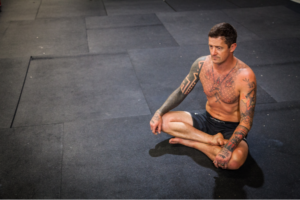Breath work, physical training, movement practice, exercise, your nutrition, meditation, journaling, mindfulness….
What do these have in common?
While they all inhabit the health, fitness and wellness space to some degree, what they have in common is that they are all tools that affect our State.
When I say State, I’m referring to the condition of you. Your mind, your body, your emotions, your feelings… you at a cellular level. The organism that is you. What you eat and drink, your training, your thoughts, your relationships, your conversations, your sleep, your perceptions, your beliefs… all impact your State in various ways. You may train like a #beast, 7 days a week, 2 hours a time, hard and heavy, getting after it and you may think you’re doing what’s best for your health.
But, what impact is that having on your State?
Is it helping or harming?
Is training your stress management strategy? No problem with that. Millions of people use exercise as a stress management strategy. Some use food. Some use breath work. Some use all those. But is that strategy helping or harming?
What if instead of stress management, we looked at State management; how we manage the effects of stressors on our State? Would that help determine what helps and what harms? Our body is smart. It is always doing its best to keep us in homeostasis; a level of normality for the organism that is us. It’s about survival. Our body does what it can to keep us alive.
When we exercise, this is stress. In response to that stress, we adapt. This adaptation occurs so the next time we experience that same stress, we, our body, can choose a better response. It changes our normal so we can survive. But, if we are not wise with our exercise or training decisions, we may not be getting the adaptations we are looking for. Our new normal may in fact be a state of dis-ease.
Likewise, once upon a time we ate to fuel our body for survival. These days food has become more than survival. It is now a social thing, a celebratory thing, a cultural thing, an emotional thing. The changing meaning of food is one factor contributing to our chronic over consumption and related obesity epidemic. We evolved to place a high value on calorie dense; high sugar, high fat, salty foods, because they were essential for survival. The problem is we still have primitive needs, but our world has changed. We have evolutionary mismatches; where our current environment is at odds with our evolution as a species. We make poor decisions around food, we react, we consume things that cause our body stress and trigger adaptations to our State that harm rather than help.
This can lead to what I refer to as State mismatches; our reactions or decisions to things in our environment that impact our State in ways we haven’t yet learned or evolved to manage… shift work, sitting for 8-hours a day in an artificially lit office, an abundance of calorie dense food, connecting via social media…. When we don’t know how to deal with something in our environment, we often react rather than choose our response. If we keep reacting to these primitive, habitual signals, we will find ourselves continuing to head down a slippery slope where our new normal is one of poor health and disease.
What if we changed the conversation around exercise, nutrition, sleep, stress management and even many of the things seen as mental health strategies to a conversation around State?
- What effect is ___________ having on my State?
- How can I change my State?
- How can I optimize my State?
- What can I do to manage my State positively in this situation
- How about, can I change the story I am telling myself about this situation to positively influence my State?
When we develop an understanding of our State and the various tools we have at our disposal in managing it, we can evolve and learn how to choose a response that is more in line with our needs today rather than the needs of our primitive ancestors.
It really all comes down to your State.

